"Kraina Express"
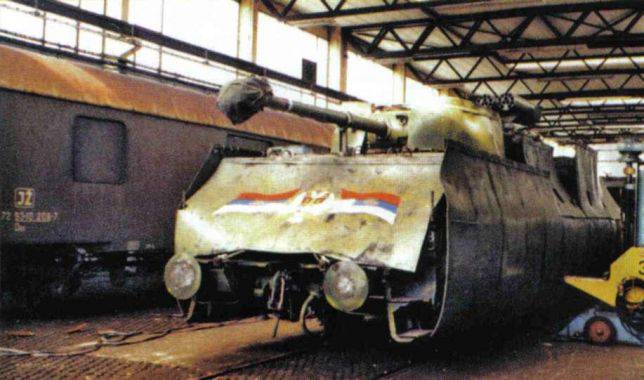
“Krajina Express” is the unofficial name of an armored train of the Serbian Krajina army that took part in hostilities in Croatia and Bosnia and Herzegovina in 1991-1995. It was established at the Knin railway depot in the summer of 1991. During the war, the armored train was involved in operations in Dalmatia, Lika and Bihacsky pocket.
At the end of November 1992, the armored train was subordinated to the 7 of the Severodalmatinsky corps as a railway company of the 75 brigade.
Later received the name 7 armored train. During the Croatian operation "Storm" was surrounded and was derailed by his own crew, which was then evacuated into the territory of the Republika Srpska.
In 1991, several workers at the Kninsky railway depot were trained by Dragan Vasilkovic, better known as “Kapetan Dragan,” an Australian army veteran who had extensive military experience and sought to share it with Serbian militia by setting up a training center for intelligence and saboteurs. The railway workers decided to use their abilities in a familiar environment - on the railway, and as a result, in July of the same year an armored train was assembled in Knin.
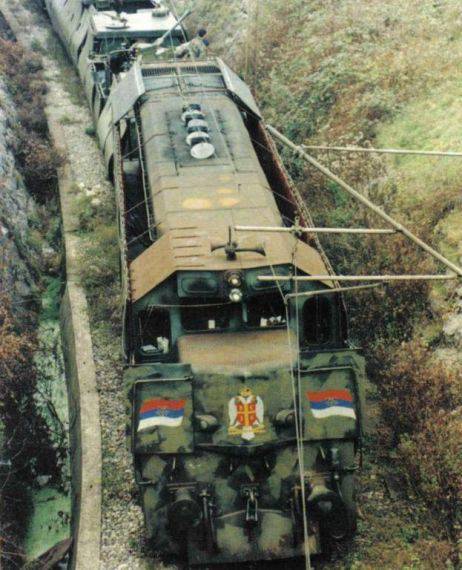
In the first operation, his cars were protected by sandbags. To protect against small weapons that was enough, the Croats then had little, and their deliveries from abroad were just beginning. At the end of the train was General Motors' locomotive.
From Grachac controlled by Serbian policemen, the train moved in the direction of Croatian positions near Štikarne.
The fighting showed the need to improve the protection of the train from the Croatian infantry. In Strmitz, the armored carriages of the cars were reinforced with steel plates 25 mm thick. At that time, only two wagons were directly fighting.
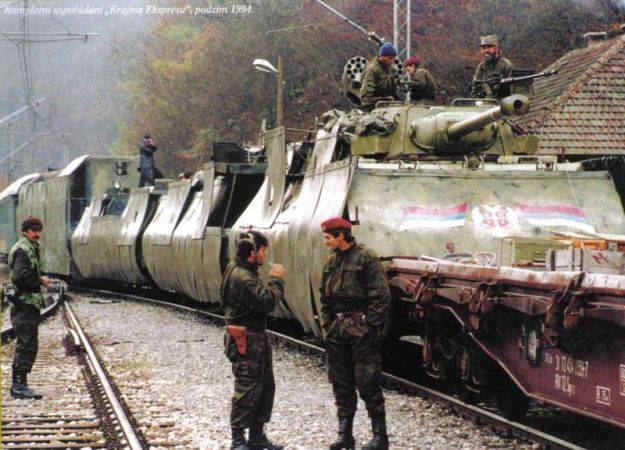
In front of one of them, a dual 38 mm caliber M20 ZSU, captured by partisans during World War II, was installed. Initially, this anti-aircraft gun was installed in the back of a truck, and then they were armed with an armored train.
On the second car were placed launchers of anti-tank missiles “Malyutka” and ZSU M12 caliber 40 mm, produced in the UK. Also, the armored train was armed with machine guns M53 - a copy of the German MG-42 since the Second World War.
After some time, the train was replenished with another combat train set between the first two. The new car was equipped with the so-called "Trotsovtsy" - a built-in anti-aircraft gun caliber 20 mm, produced in Yugoslavia under the Spanish license. In addition to it, there were another single-barreled ZSU M75 of the same caliber and two American machine guns M2HB of the caliber 12,7 mm.
Locomotive defended by two machine guns M84 - copies of the Soviet PC. The booking of wagons was strengthened; in the case of mortar shelling or artillery shelling, the team could hide inside them or inside the wagon with equipment.
The train was painted in camouflage colors. After completing all the work he was involved in the battles near Drnis. Then he participated in the operation on the de-blockade of warehouses in Sveti Rok, supported the actions of the Yugoslav Peoples Army and the Krai militia. It was then that the armored train began to overgrow with legends and received its famous nickname “Kraina Express”.
It is worth noting that it did not change throughout the war, although the train several times changed its formal status and command. Initially, he was listed as a member of the Krajina Militia, and then was assigned to the Serbian Army Krajina (regular army).
At the beginning of 1992, a truce was signed between the JNA and the Croatian side through the mediation of UN representatives. By its terms, the Yugoslav army left Krajina. At this time, an armored train fought with the Croats in an operation on the de-blockade of the Zemunik airfield near Zadar. After its successful completion, Krajina Express returned to Knin.
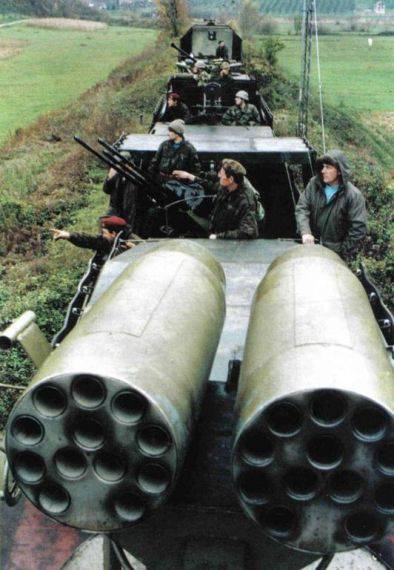
In the spring of 1992, in the Serbian Krajina, “blue helmets” - UN peacekeepers - were deployed along the front line. Most of the heavy weapons were stored in places protected by peacekeepers. The border with Croatia was supposed to be covered by lightly armed police units. In the fighting there was a short respite. The team of an armored train nevertheless was preparing for the upcoming battles.
On the first combat train, the captured German anti-aircraft gun was replaced with a ZN-3 X-mmX caliber gun adopted by the Red Army in the 76,2 year. Behind him were two NURS caliber 1942 mm. These systems were designed to equip the Yugoslav attack aircraft with them, but there were few aircraft in the SVK. On a single freight car was a mortar caliber 57 mm, but it was rarely used.
A truce with the Croats and work on the train did not prevent his team from taking part in the hostilities.
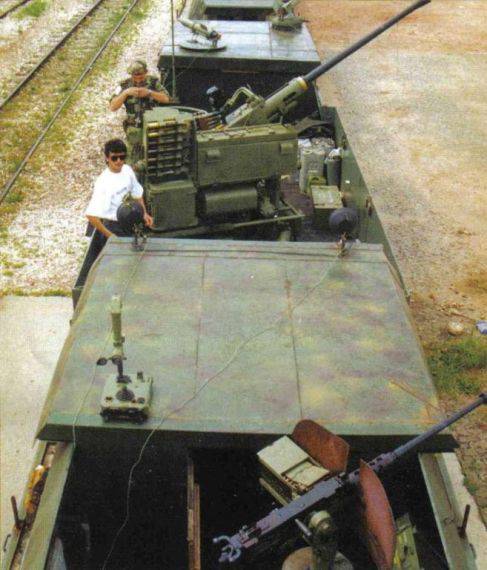
Railway workers from Knin as part of the Krajina Police Brigade took an active part in Operation Corridor, thanks to which the ground part between the Serbian Krajina and the west of the Republika Srpska with the rest of the Serbian lands was restored.
27 November 1992 of the Territorial Defense Forces, militias and paramilitary forces (volunteers) created the Serbian Army of Krajina (sometimes referred to as FRCC - the Army of the Republic of Serbian Krajina). “Kraina Express” and its team were now called the Railway Company of the 75 th Motorized Brigade of the 7 th North Dalmatian Corps SVK responsible for the southern part of Krajina, including the region of its capital, Knin.
21 January 1993, the Croats as a result of a surprise attack captured the area of Maslenitsa. There were few reserves in the ICS, they threw all they could into battle.
Heavy weapons were removed from peacekeeping warehouses and immediately sent to the front. Fighters from the armored train team fought like infantry.
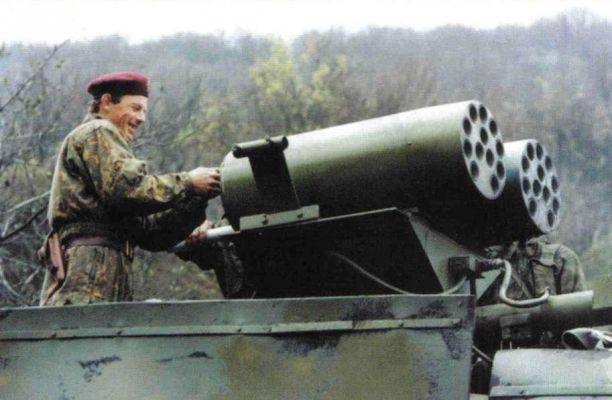
In the battles they suffered losses: two soldiers were killed. Despite the fact that the Serbs were able to return part of the lost territory, the city of Novigrad and the Maslenitsky Bridge remained in the hands of the Croats. After hard battles, the train was relocated to Benkovac.
It was then that the railway workers carried out one of their most famous operations: the Croatian warehouses with weapons were destroyed in a tunnel on the outskirts of Zadar. The Krajina Express moved out of Benkovac in the direction of the Croat positions, which were covered with unguided rockets. At the beginning of the train was a wagon attached to it with explosives and anti-tank mines. At the village of Nadin, the carriage was uncoupled and started in the direction of Croatian warehouses in the tunnel.
At that time, an armored train was most often deployed in Benkovac, supporting the actions of the SVK fighters to repel Croatian attacks. In one of the operations, “Krajina Express” acted together with the “Kapetana Dragan” fighters and, as a result, the battalion of the 159 brigade of the Croatian army was defeated. After some time, the crew of the armored train was sent to rest.
In the summer of 1993, the train conducted a partial change of weapons. ZIS-3 was replaced by self-propelled gun M18. These self-propelled guns were delivered to Yugoslavia from the USA in the 1950-s. In the Krai army, they were used mainly for artillery support for infantry and motorized brigades. Being quite popular, these self-propelled units had one drawback - the motor was not very reliable. For this reason, one of the ACS and put on an armored train, providing both her and the entire train with anti-cumulative protection.
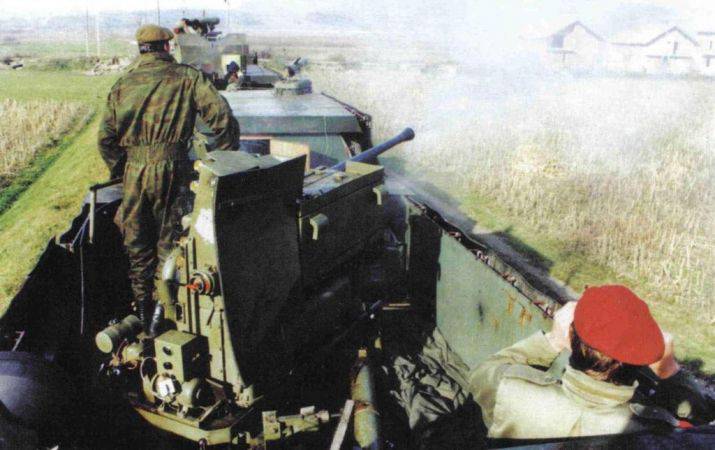
In 1994, the Krajina Express fought in Western Bosnia, where the JMC and the VRS were supported by troops of Fikret Abdić, who founded the Western Bosnia Autonomous Region and loyal to the Serbs. They were opposed by the 5 Corps of the Bosnian Muslim army. Near the city of Bihach, his fighters hit the front of the second combat car, Krajina Express, with the anti-tank missile Malyutka.
A member of the crew of an armored train was slightly injured. In this region of Bosnia, its actions were limited to artillery support of the VRS, the SVK and the soldiers of Fikret Abdic. In one of the tunnels, the crew of an armored train came across a mine, and then sappers accompanied it.
Also, his actions were complicated by the large number of concrete bunkers erected by soldiers of the 5 corps. For several reasons, the armored train returned to Knin in December 1994 of the year. In the battles in Western Bosnia, he participated under the name of 7 armored train and, as before, was part of the 7 Corps SVK.
In late July, 1995, the Croatian units defeated the VRS in the area of the cities of Glamocz and Bosansko-Grahovo. The southern part of the Serbian Krajina, therefore, fell into a semi-circle. The Krajina Express then had two crews: one was located in Knin, the other was in the area of the Dinar Mountains.
Early in the morning of August 4, 1995, the Croatian Army launched Operation Oluya (Storm) against the Serbian Krajina. According to various estimates from 150 000 to 190 000, Croatian soldiers attacked an army of Krajina Serbs, which in the positions numbered about 27 000 people.
On Knin, in which there were few military targets, more than three thousand shells fell. When the first of them began to get into the railway depot, the crew, located in the city, took part in the defense of Krajina. The armored train moved to the Lika area, but there were no specific targets before it.
Being in a semi-circle, the crew members derailed the train so that it did not get to the Croatian soldiers, and themselves were forced to evacuate to the territory of the Republika Srpska.
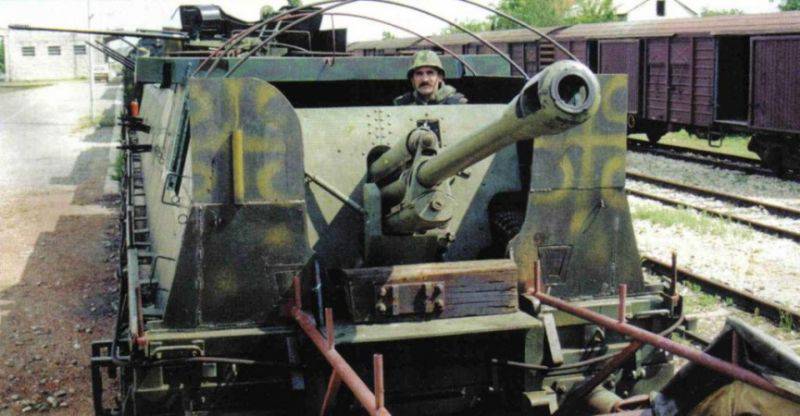
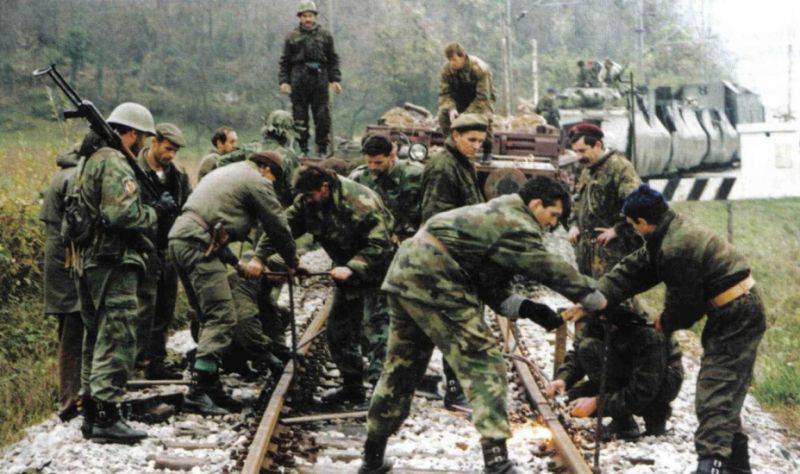
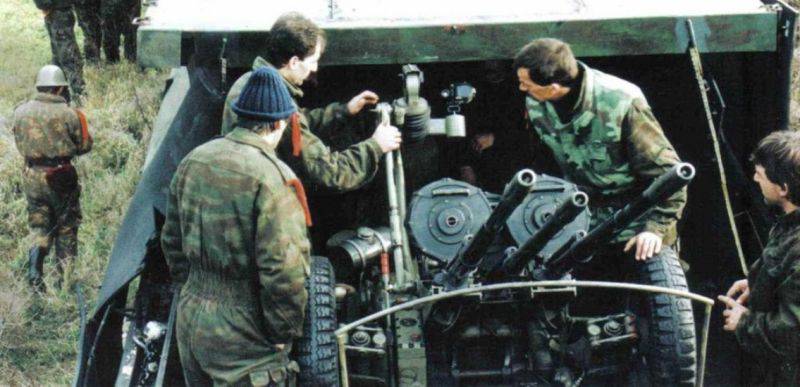
Information